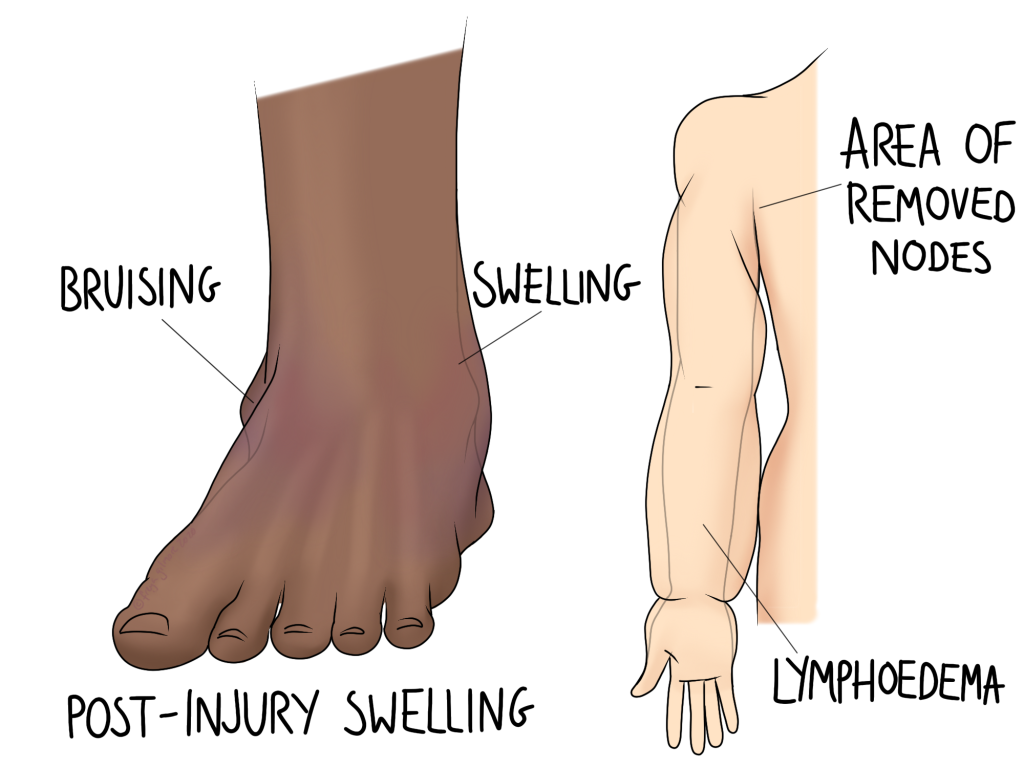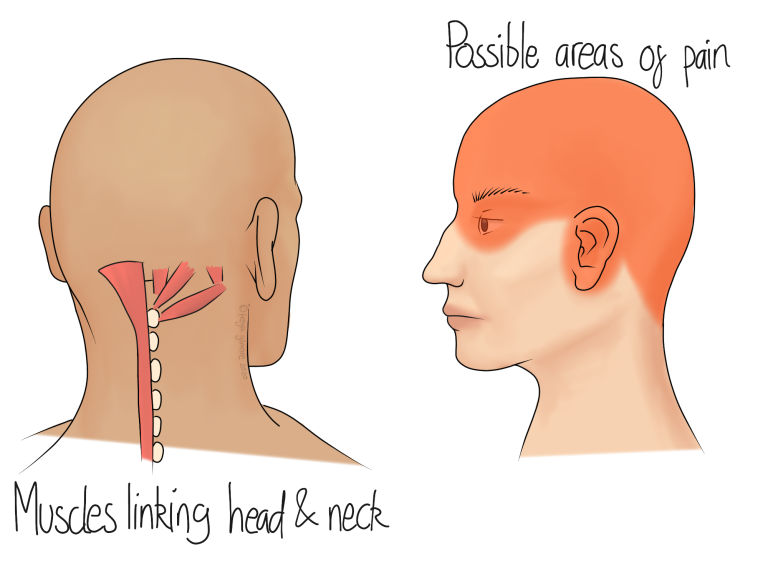Osteopaths are recognised as being able to help with some circulation issues. That includes but is not limited to post injury swelling, and some cases of lymphoedema.

Lymph and Lymphoedema
Blood travels from arteries (oxygenated blood) to cells, providing them with nutrients and oxygen. But bave you ever wondered how that blood then moves to the venous (deoxygenated) system? The blood moves through the smallest blood vessels to the cells, delivers its goods, picks up waste, then continues on through more tiny vessels to the veins. But during the pressurised journey, some of the fluid from the blood is left behind. This is lymph, and it’s what builds up during inflammation. It doesn’t move on to a vein, but continues its travels to lymph ducts as a part of the immune system.
Lymph nodes are commonly known as “glands”- the bumps that come up when you’re fighting infection. They sit along the route the lymph takes on its way back to the main vessel in the chest (the thoracic duct) where the fluid drains back into the venous system.
Swelling After Lymph Node Removal
Lymphoedema literally means “lymph-swelling”. One common cause for it is the removal of lymph nodes. This is common in surgeries for cancer, where the disease may have spread to the lymph nodes. Breast cancer surgery may involve removal of nodes in the armpit, which disrupts the flow of lymph from the arm and causes swelling of that limb. Post-surgery, patients should be advised about using pressure garments and self massage techniques to encourage the flow of lymph back towards the thoracic duct.
Your osteopath can support you with massage to encourage drainage in the affected area. It is absolutely still worth performing it yourself, as the lymph quickly builds up again after massage. But outsourcing the job can be particularly helpful if you’re struggling to keep on top of it, or if you have another injury or pain that limits your ability to carry it out comfortably.
Post-Injury Swelling
If you’ve sprained your ankle, you can expect some local swelling for a short while. This is a build up of lymph, arriving to help clear away damaged tissue and provide nutrients to aid healing. So some swelling is good, we wouldn’t want to limit the clean up and repair. But if that lymph stays put, it ends up bathing the area in low nutrient, high waste fluid. Rehabilitation for an ankle sprain therefore needs to involve some lymphatic circulation techniques.
While the swelling is still present, it’s helpful to encourage it to move on. Simple drainage techniques, which feel like a light massage, can be really effective here. Although it might not feel like much, and the swelling may return, what matters is that the fluid has been refreshed. Your osteopath can use these techniques in clinic and give you a demo on how to continue them at home.
A cool compress, or a combination of warm and cool can help too. Applying cold to the area encourages the surface blood vessels to constrict, reducing blood flow at skin level, but also pushing through some of that lymph. Application should only be brief, because the aim is not to freeze the area, just to cool it.
Click here to make an osteopathy appointment in the Bristol area

